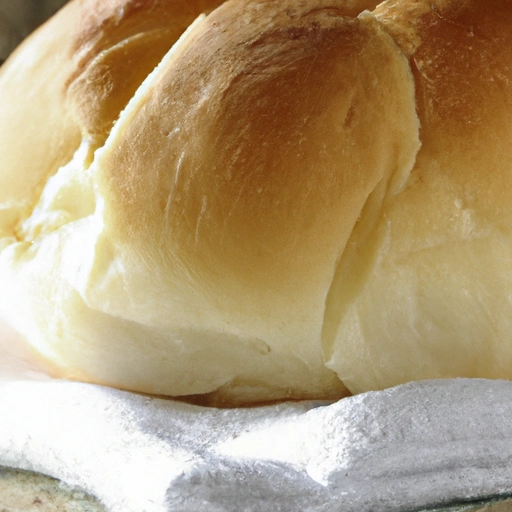Kaiser Roll
Description

The Kaiser Roll, also known as a Vienna roll or a hard roll, is a classic bread roll that originated in Austria. It is well-known for its round, crusty exterior and a star-shaped, round, or spiral pattern on top. Made from white flour, yeast, malt, water, and salt, this roll has a soft interior with a slightly chewy and crispy crust. It is a versatile ingredient in both European and American kitchens, often served for sandwiches or as a side to numerous dishes.
Common uses
Kaiser Rolls are commonly used as a vehicle for sandwiches, particularly deli meats, cheeses, and sausages. They are also a popular choice for burgers, given their sturdy texture that holds up well to juicy patties and ample toppings. In addition to sandwich-making, these rolls are often served as a side with butter, making them a great accompaniment to soups, salads, and pasta dishes.
Nutritional value
Calories
A typical Kaiser Roll contains approximately 200 calories (837 kJ).
Protein
Each roll has about 6 grams (0.21 oz) of protein.
Fat
The fat content is relatively low, with around 2 grams (0.07 oz) per roll.
Carbohydrates
Carbohydrates are present in significant amounts, with about 38 grams (1.34 oz) per roll.
Vitamins
Kaiser Rolls are a source of certain B-vitamins, particularly B1 (Thiamine) and B3 (Niacin).
Minerals
They also provide essential minerals such as calcium and iron.
Health benefits
As a source of complex carbohydrates, Kaiser Rolls can provide a steady release of energy. The presence of B-vitamins aids in energy metabolism and maintaining good health. Additionally, the fiber in the rolls, though not substantial, can assist with digestion.
Potential risks
Consuming Kaiser Rolls in moderation is key as they are primarily made of white flour and can contribute to high carbohydrate intake. Overconsumption may lead to weight gain. Individuals with gluten sensitivity or celiac disease should avoid Kaiser Rolls due to their gluten content.
Common recipes
Kaiser Rolls are often used for making sandwiches such as ham and cheese, tuna, egg salad, and the classic BLT. They are also a popular base for burger buns.
Cooking methods
While Kaiser Rolls are typically purchased ready-to-eat, they can be warmed in an oven (at 350°F or 175°C) to enhance their crustiness. They can also be toasted to add a crunchy texture to sandwiches.
Pairing with other ingredients
These rolls pair well with both sweet and savory spreads, including jam, honey, mustard, and mayonnaise. For sandwich fillings, deli meats, cheeses, grilled vegetables, and various condiments are excellent choices.
Summary
The Kaiser Roll is a timeless bread roll recognized for its unique patterned top and versatile nature. With origins in Austria, this roll has transcended borders to become a beloved ingredient in sandwiches and meals around the world. Appreciated for its taste and texture, the Kaiser Roll continues to be a favorite in bakeries, delis, and kitchens across Europe and America.